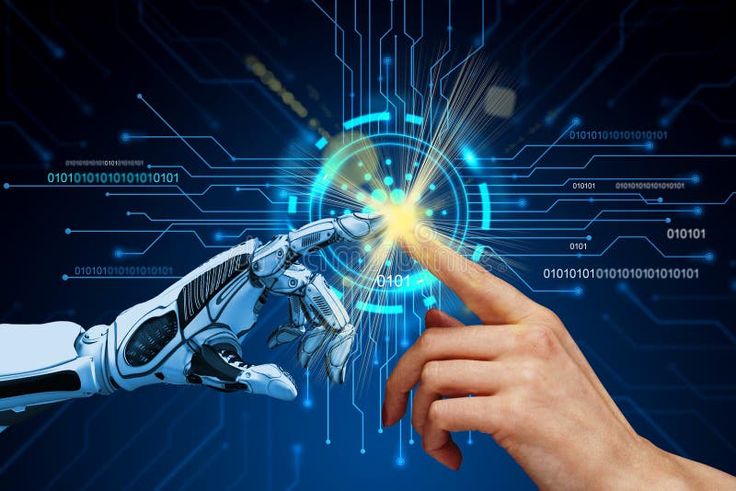
Artificial Intelligence (AI) and Machine Learning (ML) are two of the most exciting and transformative technologies of our time. They’re changing the way we live, work, and interact with the world. But what exactly are AI and ML, and how do they work? In this guide, we’ll break it all down in simple, easy-to-understand terms. By the end, you’ll have a solid understanding of these technologies and how they’re shaping the future.
What is Artificial Intelligence (AI)?
Artificial Intelligence refers to the ability of machines to perform tasks that typically require human intelligence. These tasks include things like learning, reasoning, problem-solving, understanding natural language, and recognizing patterns. AI can be divided into two main categories:
- Narrow AI (Weak AI): This type of AI is designed to perform specific tasks. Examples include voice assistants like Siri and Alexa, recommendation systems on Netflix, and self-driving cars. Narrow AI is highly specialized and doesn’t possess general intelligence.
- General AI (Strong AI): This is a more advanced form of AI that can perform any intellectual task that a human can do. General AI doesn’t exist yet, but it’s the goal of many researchers in the field.
What is Machine Learning (ML)?
Machine Learning is a subset of AI that focuses on teaching machines to learn from data without being explicitly programmed. Instead of following strict rules, ML algorithms use statistical techniques to identify patterns in data and make predictions or decisions.
For example, if you want to build a system that can recognize cats in photos, you wouldn’t write specific rules like “look for pointy ears and whiskers.” Instead, you’d feed the system thousands of cat photos and let it learn the patterns on its own. This is the essence of Machine Learning.
How Does Machine Learning Work?
Machine Learning involves three key components: data, algorithms, and models. Here’s a simple breakdown of how it works:
- Data: The foundation of ML is data. The more high-quality data you have, the better your model will perform. Data can come from various sources, such as sensors, databases, or user interactions.
- Algorithms: These are the mathematical formulas that analyze the data and identify patterns. Common ML algorithms include linear regression, decision trees, and neural networks.
- Models: Once the algorithm has processed the data, it creates a model. This model is essentially a set of rules or patterns that the machine uses to make predictions or decisions.
Types of Machine Learning
There are three main types of Machine Learning:
- Supervised Learning: In this type, the algorithm is trained on labeled data, which means the input data is paired with the correct output. For example, if you’re training a system to recognize spam emails, you’d provide it with a dataset of emails labeled as “spam” or “not spam.” The algorithm learns to predict the correct label for new, unseen data.
- Unsupervised Learning: Here, the algorithm is given unlabeled data and must find patterns or structures on its own. A common example is clustering, where the algorithm groups similar data points together. This is often used in customer segmentation or anomaly detection.
- Reinforcement Learning: This type of learning involves training an algorithm through trial and error. The algorithm receives feedback in the form of rewards or penalties based on its actions. Over time, it learns to maximize rewards and minimize penalties. Reinforcement learning is used in applications like game-playing AI (e.g., AlphaGo) and robotics.
Real-World Applications of AI and ML
AI and ML are already being used in a wide range of industries. Here are some real-world examples:
- Healthcare: AI is helping doctors diagnose diseases more accurately and quickly. For example, ML algorithms can analyze medical images to detect conditions like cancer or predict patient outcomes based on historical data.
- Finance: Banks and financial institutions use AI to detect fraudulent transactions, assess credit risk, and provide personalized financial advice.
- Retail: E-commerce platforms like Amazon use AI to recommend products based on your browsing and purchase history. AI is also used for inventory management and demand forecasting.
- Transportation: Self-driving cars rely on AI and ML to navigate roads, recognize obstacles, and make decisions in real-time.
- Entertainment: Streaming services like Netflix and Spotify use ML to recommend movies, shows, and music based on your preferences.
The Benefits of AI and ML
The rise of AI and ML brings numerous benefits, including:
- Efficiency: AI can automate repetitive tasks, freeing up time for humans to focus on more creative and strategic work.
- Accuracy: ML algorithms can analyze vast amounts of data with incredible precision, leading to better decision-making.
- Personalization: AI enables businesses to deliver personalized experiences to their customers, from tailored product recommendations to customized marketing messages.
- Innovation: AI and ML are driving innovation in fields like healthcare, transportation, and education, leading to new products and services that improve our lives.
Challenges and Ethical Considerations
While AI and ML offer many benefits, they also come with challenges and ethical concerns:
- Bias: ML algorithms can inherit biases from the data they’re trained on, leading to unfair or discriminatory outcomes. For example, a hiring algorithm might favor certain demographics over others if the training data is biased.
- Privacy: AI systems often rely on large amounts of personal data, raising concerns about privacy and data security.
- Job Displacement: As AI automates more tasks, there’s a risk of job displacement in certain industries. However, it’s also creating new opportunities in fields like data science and AI development.
- Transparency: Many AI systems, especially those based on deep learning, are often seen as “black boxes” because it’s difficult to understand how they arrive at their decisions. This lack of transparency can be problematic in critical applications like healthcare or criminal justice.
The Future of AI and ML
The future of AI and ML is incredibly exciting. Here are some trends to watch out for:
- Explainable AI: Researchers are working on making AI systems more transparent and understandable, so users can trust their decisions.
- AI in Edge Computing: AI is increasingly being integrated into edge devices like smartphones and IoT devices, enabling real-time processing and decision-making without relying on the cloud.
- AI for Social Good: AI is being used to tackle global challenges like climate change, poverty, and healthcare access. For example, AI-powered tools are helping farmers optimize crop yields and predict natural disasters.
- Quantum Machine Learning: The combination of quantum computing and ML could revolutionize fields like drug discovery and cryptography.
How to Get Started with AI and ML
If you’re interested in learning more about AI and ML, here are some steps to get started:
- Learn the Basics: Start with online courses or books that cover the fundamentals of AI and ML. Platforms like Coursera, edX, and Udemy offer beginner-friendly courses.
- Practice Coding: Python is the most popular programming language for AI and ML. Learn the basics of Python and explore libraries like TensorFlow, PyTorch, and Scikit-learn.
- Work on Projects: The best way to learn is by doing. Start with small projects like building a spam filter or a recommendation system.
- Join Communities: Connect with other AI and ML enthusiasts through online forums, meetups, and social media groups.
Conclusion
AI and Machine Learning are no longer just futuristic concepts—they’re here, and they’re transforming the world as we know it. From healthcare and finance to entertainment and transportation, these technologies are making our lives easier, more efficient, and more personalized.
While there are challenges and ethical considerations to address, the potential benefits of AI and ML are immense. By understanding how these technologies work and staying informed about their developments, you can be part of the exciting journey into the future.
So, whether you’re a student, a professional, or just a curious learner, now is the perfect time to dive into the world of AI and ML. The future is bright, and it’s powered by intelligence—both human and artificial.


